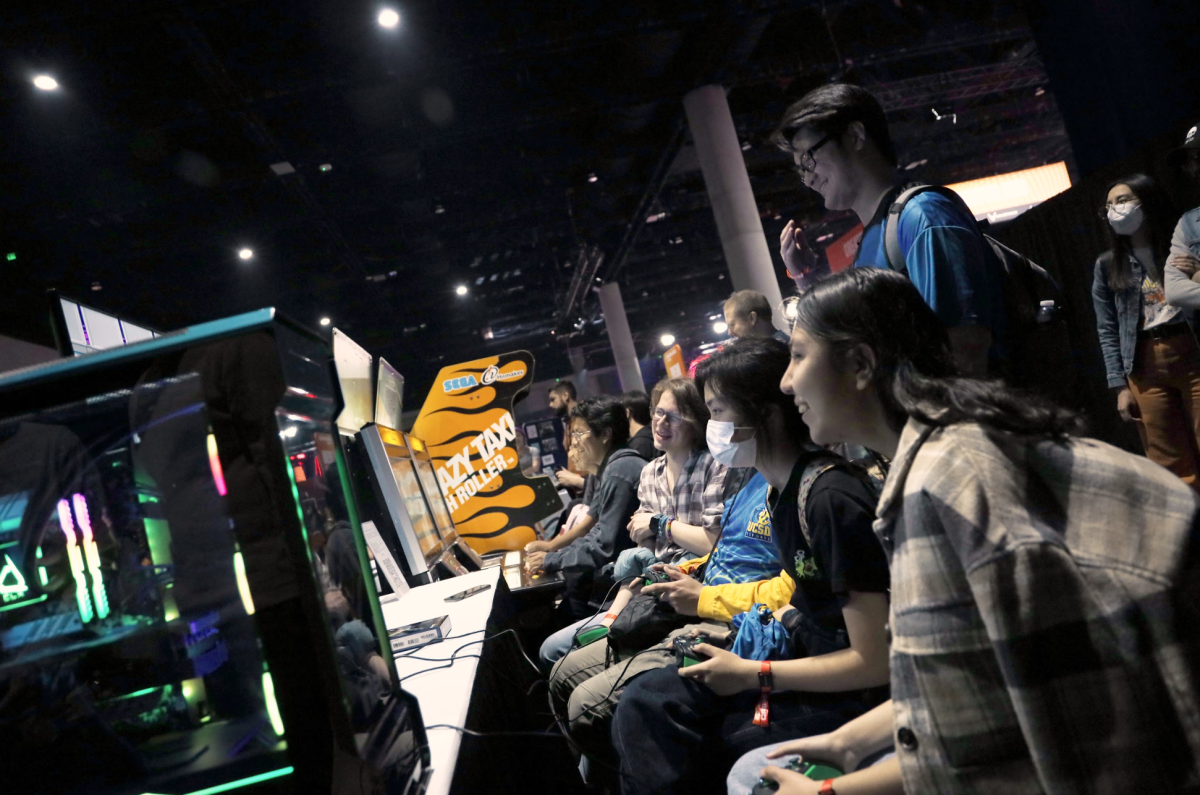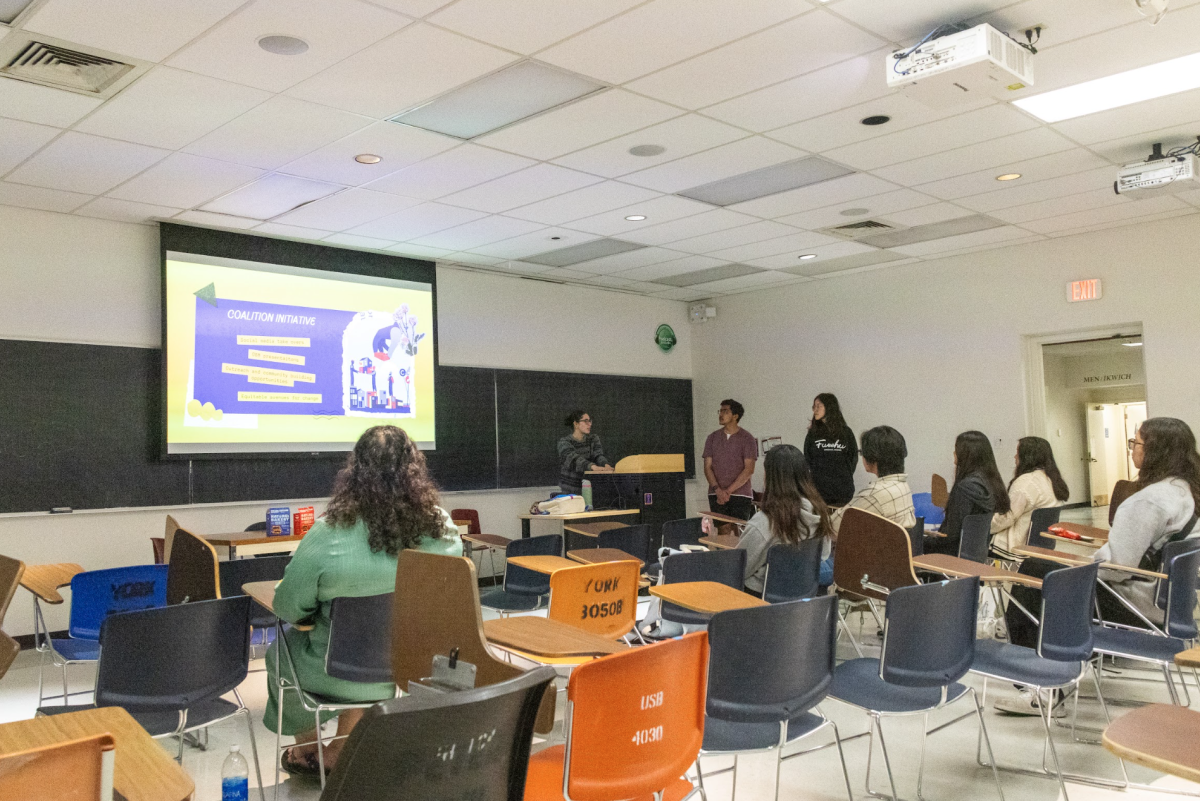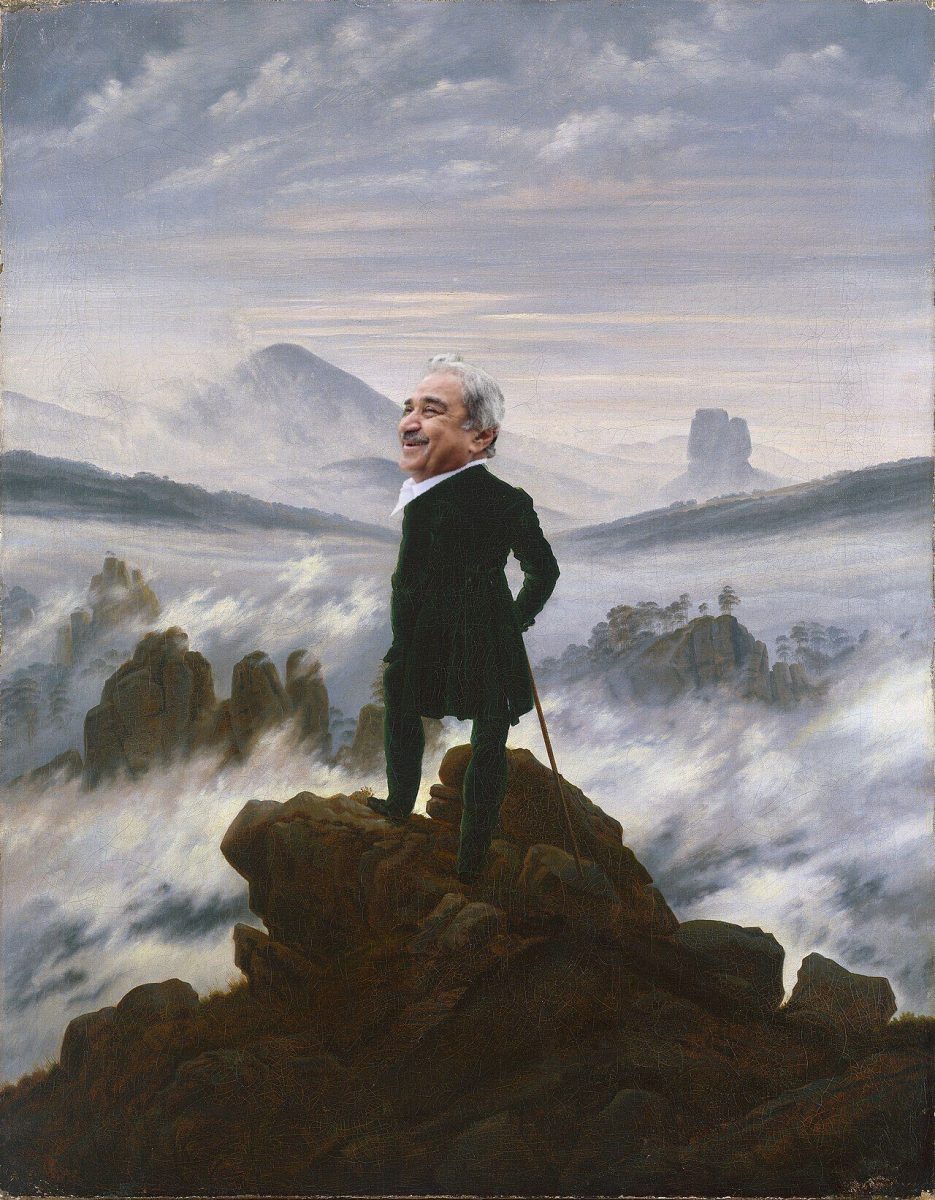On terrain where colossal skyscrapers appear to spring up instantaneously and indoor ski slopes are preserved on desert sands, possibilities seem endless. For many years in Dubai, the only apparent direction was up. That is, until the economy — which is built on the oil industry — collapsed. A wave of panic swept over its inhabitants, though masked by the glitz and glam of the city. Many onlookers were (and still are) unclear as to what lies behind the glistening veil of extravagance and wealth. Artist and Filmmaker Katy Chang, a UCSD alumna, might have some answers. Her feature-length documentary, “Glitter Dust: Finding Art in Dubai,” examines the underlying social issues of Dubai by following the lives of three struggling artists.
“Art is the lens where we look at all these social issues of society there, like censorship, treatment of women, treatment of workers,” Chang said. “And it’s not just society there in Dubai; it’s about modern society — how we have all this monetary capital that’s driving all this growth and how cultural capital — the artists that are critically examining these changes in society — isn’t being supported except from the ground up by these artists.”
Chang began filming in Dubai in 2009 and calls her film a “drawcumentary,” as it integrates hand-drawn images with live footage.
“I’ve always been interested in making art that looks at art,” Chang said. “But also, I had to confront the limitations of filming without permits. It was completely unauthorized, so I thought, ‘Well, I need to tell this story, and I need to collaborate on it.’ So I drew on top of it, and it allowed me to put my voice onto the film because there’s no narrator in the film. I just wanted people to speak very honestly by themselves, so I expressed my point of view the best way I knew how by drawing and by animation.”
Chang’s interest in the arts began in her early childhood. At the age of two, she started doodling on the scrap paper that her mother would bring home from work. Her doodling escalated to studying art at the University of Maryland and in 2002, receiving an MFA in video and performance art at UCSD, where she met her husband, the producer and editor of the documentary. She then went on to study art law in her hometown of Washington D.C.
“I sort of see art and law as related, both as a way of looking at interactions and relationships,” Chang said. “And that’s how I kind of see filmmaking, too; it’s sort of a lens into human interactions and a way of relating to one another.”
With this idea in mind, Chang set out to make a fictional short film, “Nanjing Road,” in Shanghai, China about a year after graduating from law school in 2005. The film opened up a pathway to her current documentary, and after two years in China, she moved to Dubai with the intent to explore the art scene and film a documentary.
“I’d never been in the Mideast before, so I totally jumped on it,” Chang said. “We were so excited that we were filming on our second day there.” But filming in Dubai came with its obstacles — first and foremost: the heavy censorship. “You need permits to film in Dubai, and we ended up just filming secretly,” Chang said. “If this film was officially sponsored, we wouldn’t have had the liberty to be so critical — and not just to be critical of the art there but also to be critical of the number of workers there and how they’re treated and compensated.” Chang can’t count the number of times when she and her film crew ran into trouble and were chased away or escorted out by the Dubai police. “We filmed a lot of things we weren’t allowed to,” Chang said. “You’re not allowed to film workers, and we filmed a lot of workers. So I’m very proud of that — to show that that actually exists; there are people who are doing these amazing architectural feats.”
Alongside having to sneak around the city, the intense heat and sand presented another obstacle. “It was about 120 degrees sometimes, and there’s just so much sand everywhere, blowing sand storms,” Chang said. “And just trying to take care of the equipment and making sure we could get everything technically correct — I would definitely say making a film in San Diego was great practice for that. Filming at the beach and on the sand — I didn’t know it at the time that I would end up in Dubai, but I kept referencing back to when I would film in La Jolla.” Through the cinéma vérité style of the film — letting the story unfold organically — Chang hopes to portray the rich culture of Dubai and its two layers: the excessive and the realistic, focusing on the human labor behind the latter.
Chang also emphasized that it’s a story of modern life now. “It’s a universal story about the huge dreams that people can have inside of a city and then falling short of those dreams and the reality behind that and then the value of works and workers,” Chang said. “I suppose that’s the socialist in me.”
Using the art scene in Dubai to tap into this idea of dreaming, Chang revealed the role of Dubai as a platform for art around the world.
Once filming was complete in 2010, and after mailing their tapes out separately to avoid running into even more trouble, Chang and her team returned to the U.S. to make edits. So far, they’ve shown only parts of the documentary in Ghana, Dubai (cultural edits must be made to have it shown in the U.A.E.) and Washington D.C.
“We just finished the film, so we’re showing it around and trying to get it into American International Festivals,” Chang said. “We really want to bring it to a bigger audience.”
While still waiting for the proper premiere of “Glitter Dust,” Chang is currently back in D.C. in pre-production of her upcoming film on Chinese labor camps.
She wants to return to Dubai in time for the Dubai Film Festival and hopes to be able to show her documentary there.
“I want to continue making films and continue making art and share it with as many people as possible,” Chang said. “There are so many stories to be told. It’s just so interesting. I can’t believe this is the first documentary I’ve made.”







